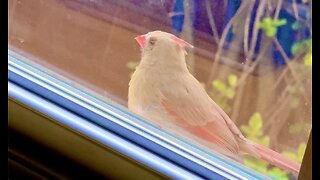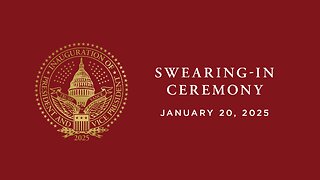Premium Only Content

Honking Canada Geese in formation. Gotta move fast before winter!
An early November Quebec morning on Lac Ste. Pierre. Canada geese, migrating to southern agricultural areas for the winter. They fly in a distinct “V” pattern, where one goose is the leader and its flock follows behind in a v-shape.
Canada geese fly south to their non-breeding sites to avoid the cold. They'll stay in their non-breeding sites all winter. They’ll migrate back north to their breeding sites in April, May or Early June
When they fly in formation, they create their own unique form of teamwork. As each bird flaps its wings, it creates uplift for the bird immediately following. ... Geese honk from behind to encourage those up front to keep up their speed.
Canada geese can travel 1,500 miles in a day if the weather permits. These birds tend to fly around 40 miles per hour during migration, though that can increase up to 70 miles per hour if they catch a strong tailwind.
To reduce the effort, geese often fly at night when the air is calmer, or in the day when there's a helpful tailwind; they avoid flying into a headwind that would blow them backward. In addition, they have another energy-saving trick.
When the Head Goose gets tired, it rotates back in the wing and another goose flies point. That’s teamwork!
-
 0:04
0:04
AmplifiedLIFE
9 months ago $0.03 earned“Peep”-ing & Chirping Cardinal
115 -
 LIVE
LIVE
The Dan Bongino Show
2 hours agoTrump's Historic Inauguration - LIVE FROM DC (Ep. 2404) - 01/20/2025
135,234 watching -
 LIVE
LIVE
GOP
10 hours agoThe 60th Presidential Inauguration Ceremony
5,733 watching -
 LIVE
LIVE
Donald Trump Jr.
2 hours agoFull Coverage of My Father’s Inauguration, America is Back. | TRIGGERED Ep.209
14,019 watching -
 LIVE
LIVE
Right Side Broadcasting Network
6 days ago🔴 LIVE: The Inauguration of Donald J. Trump as the 47th President of The United States 1/20/25
88,712 watching -
 LIVE
LIVE
The Quartering
19 hours agoTrump Inauguration LIVE Broadcast & Commentary With DecoyVoice, Hannah Clare & Styxhexenhammer!
3,177 watching -
 LIVE
LIVE
Nerdrotic
1 hour agoReturn of the KING! - Nerdrotic Nooner 459
2,512 watching -
 LIVE
LIVE
Due Dissidence
9 hours agoLIVE: Donald Trump Inauguration - Reaction, Commentary, Reporting From DC
1,626 watching -
 LIVE
LIVE
Benny Johnson
1 hour agoTrump Inauguration LIVE Right Now, Officially Sworn in as President | ‘The Golden Age BEGINS!’
20,042 watching -
 LIVE
LIVE
Drew Hernandez
13 hours agoPRESIDENT DONALD J. TRUMP INAUGURATION DAY COVERAGE
1,192 watching